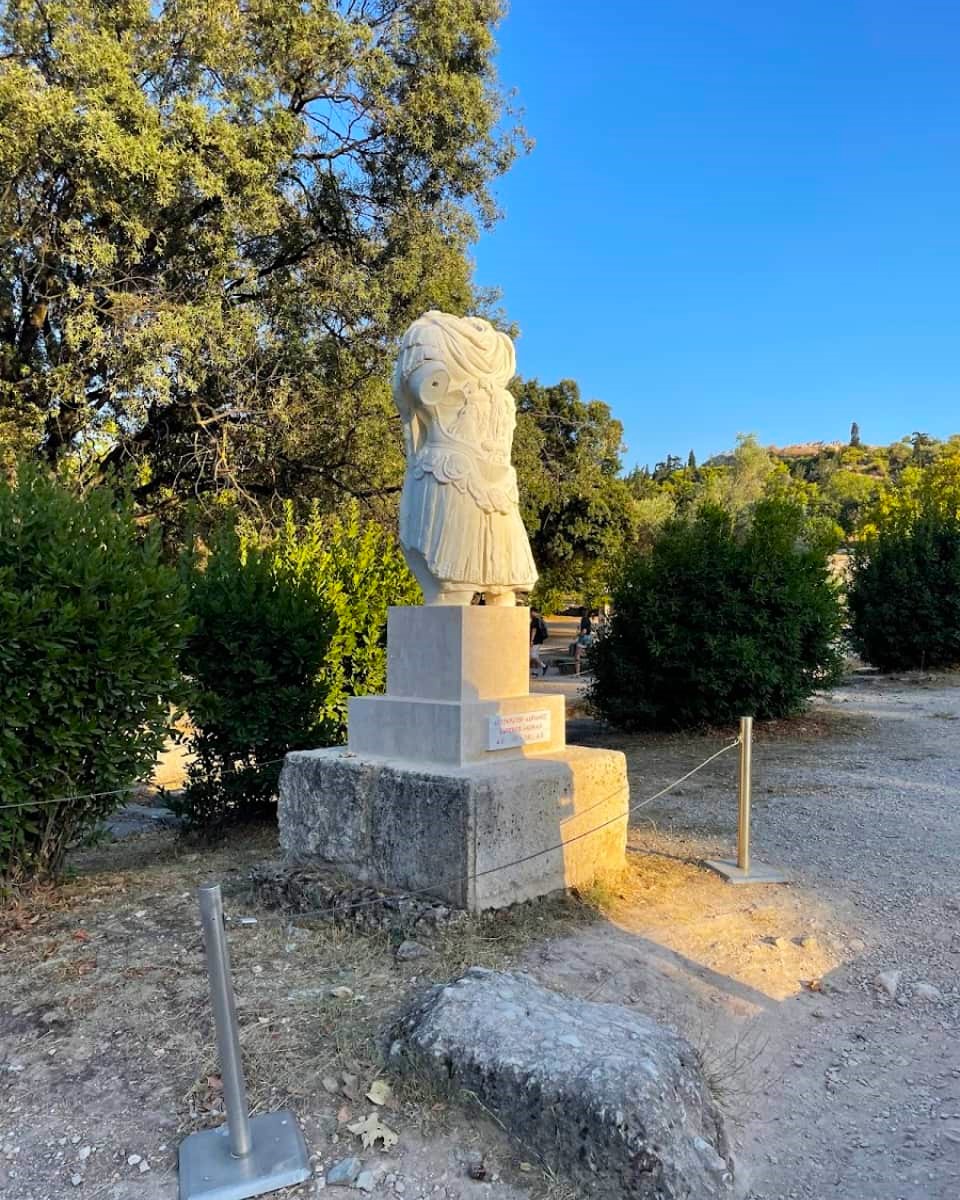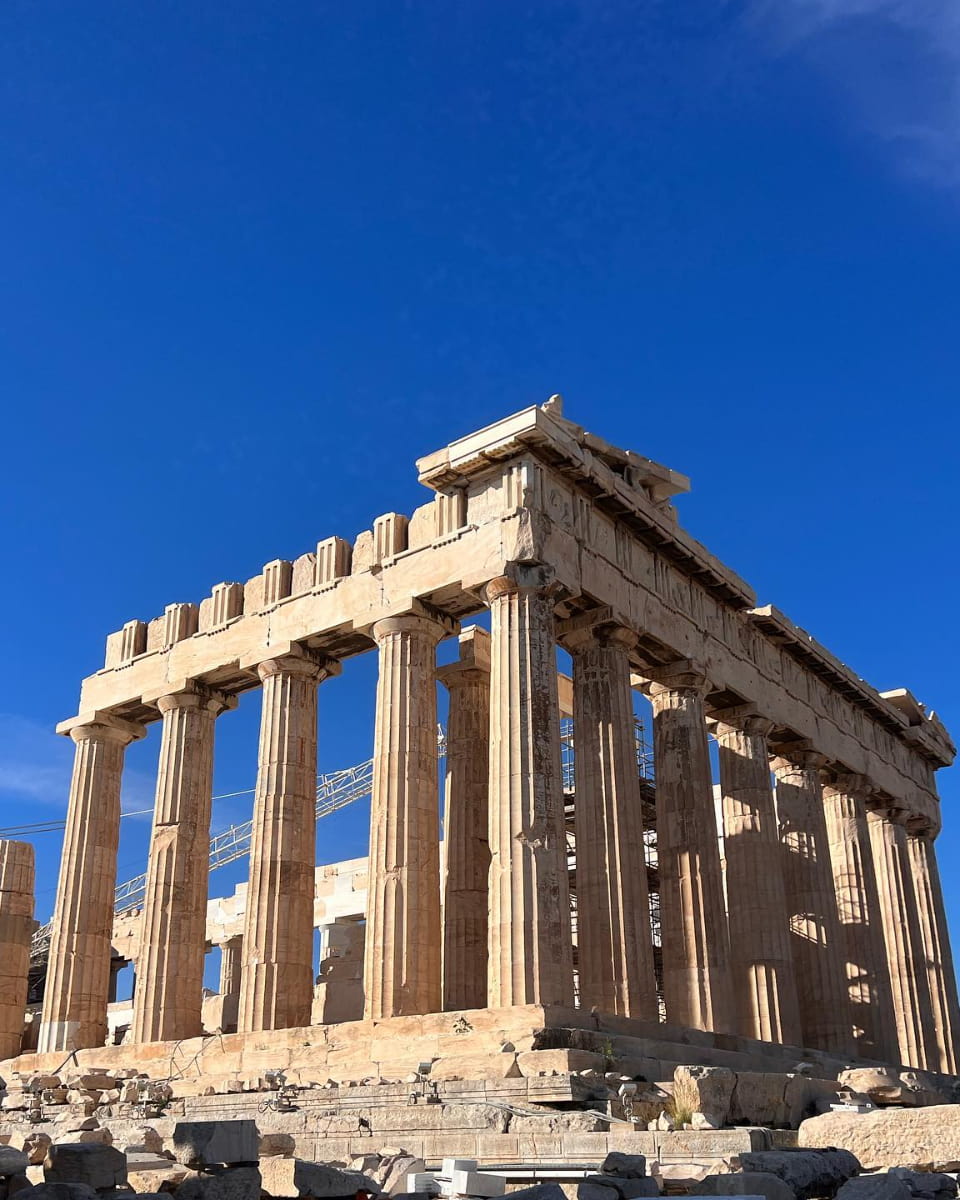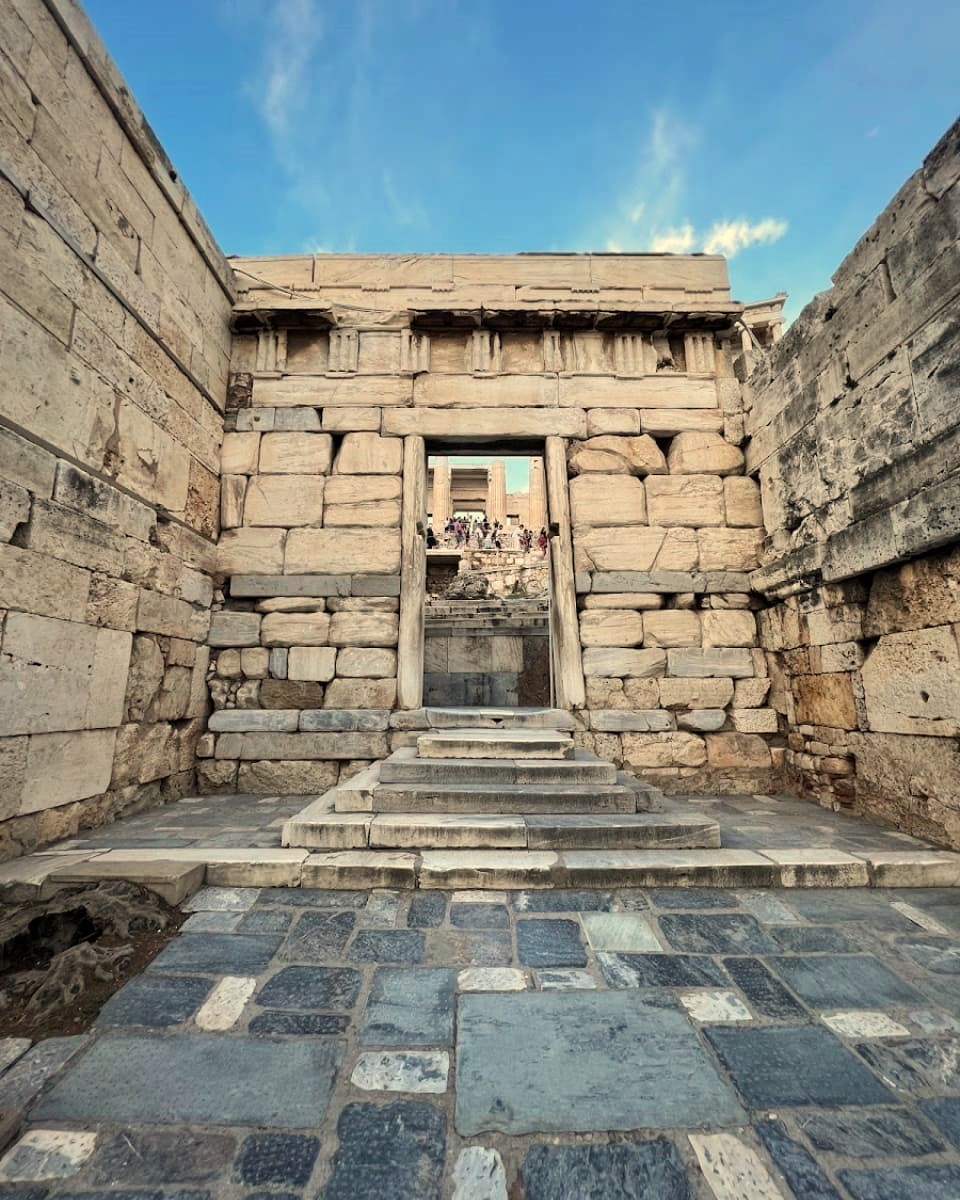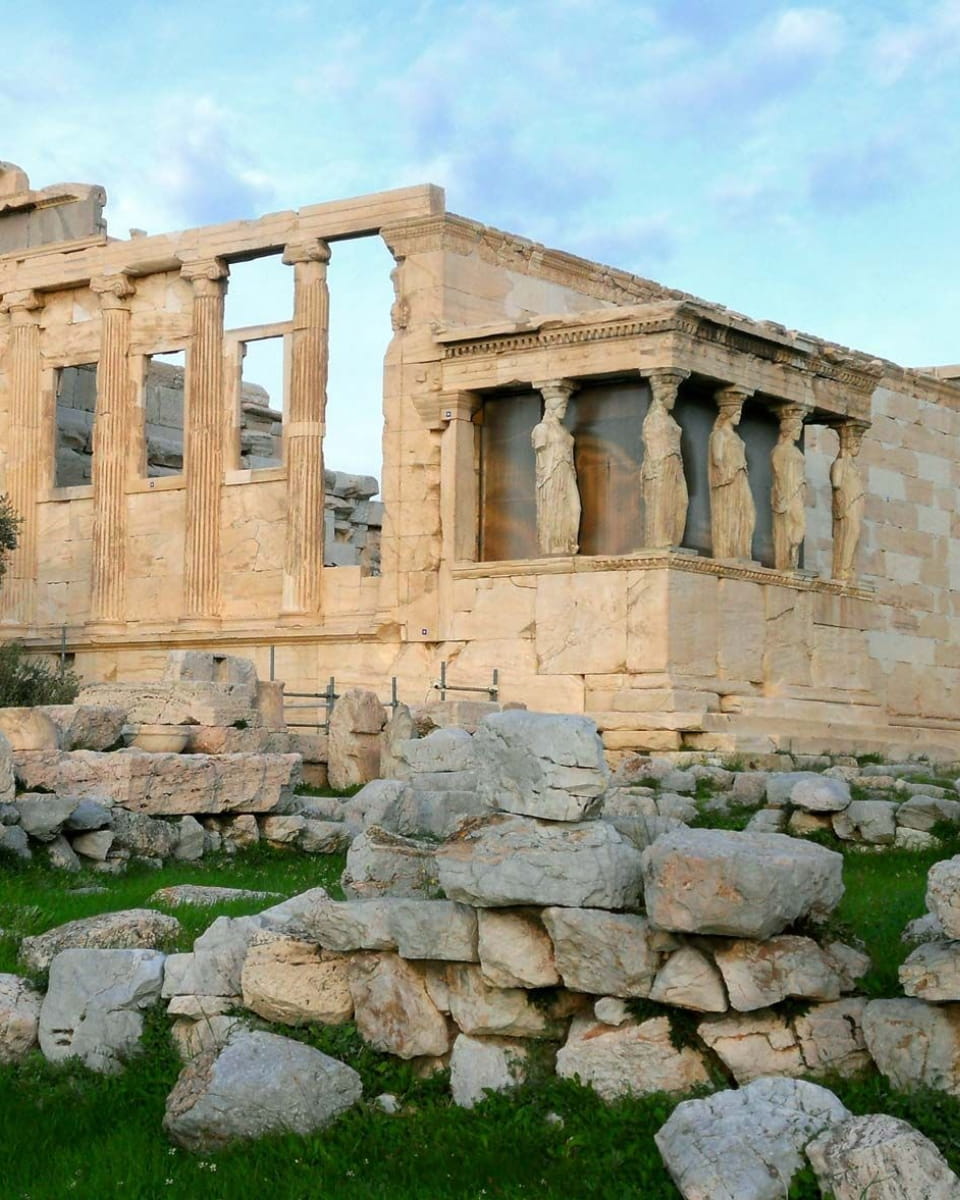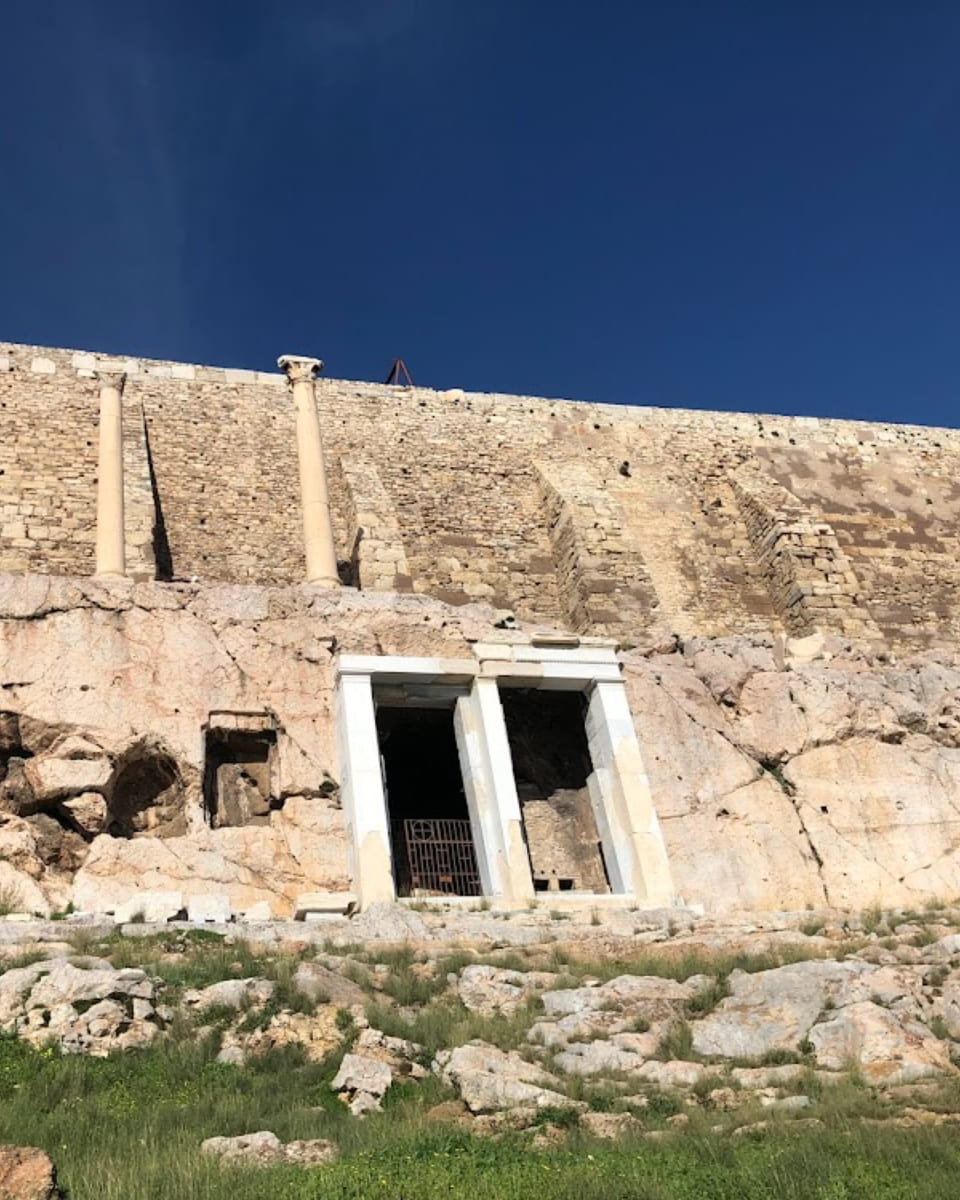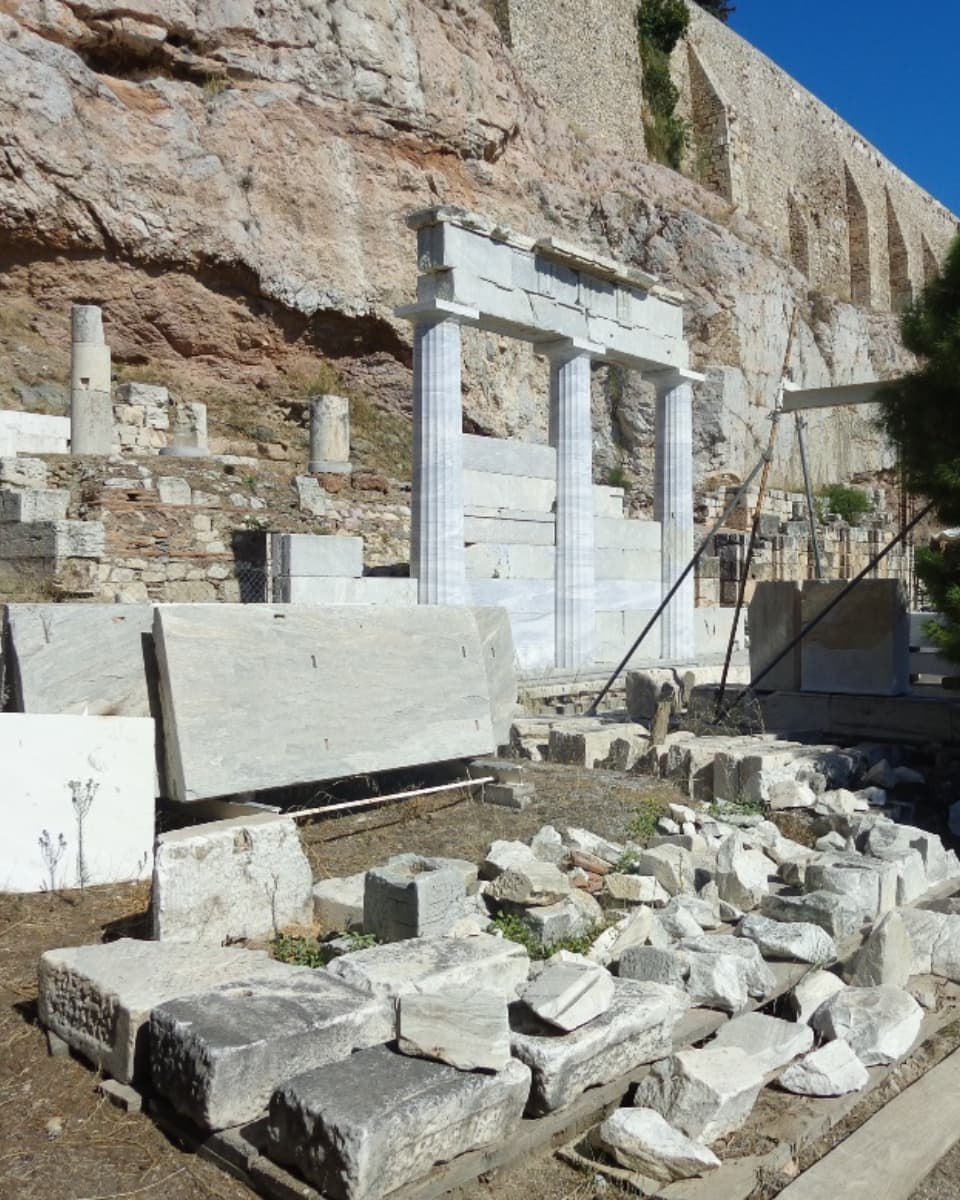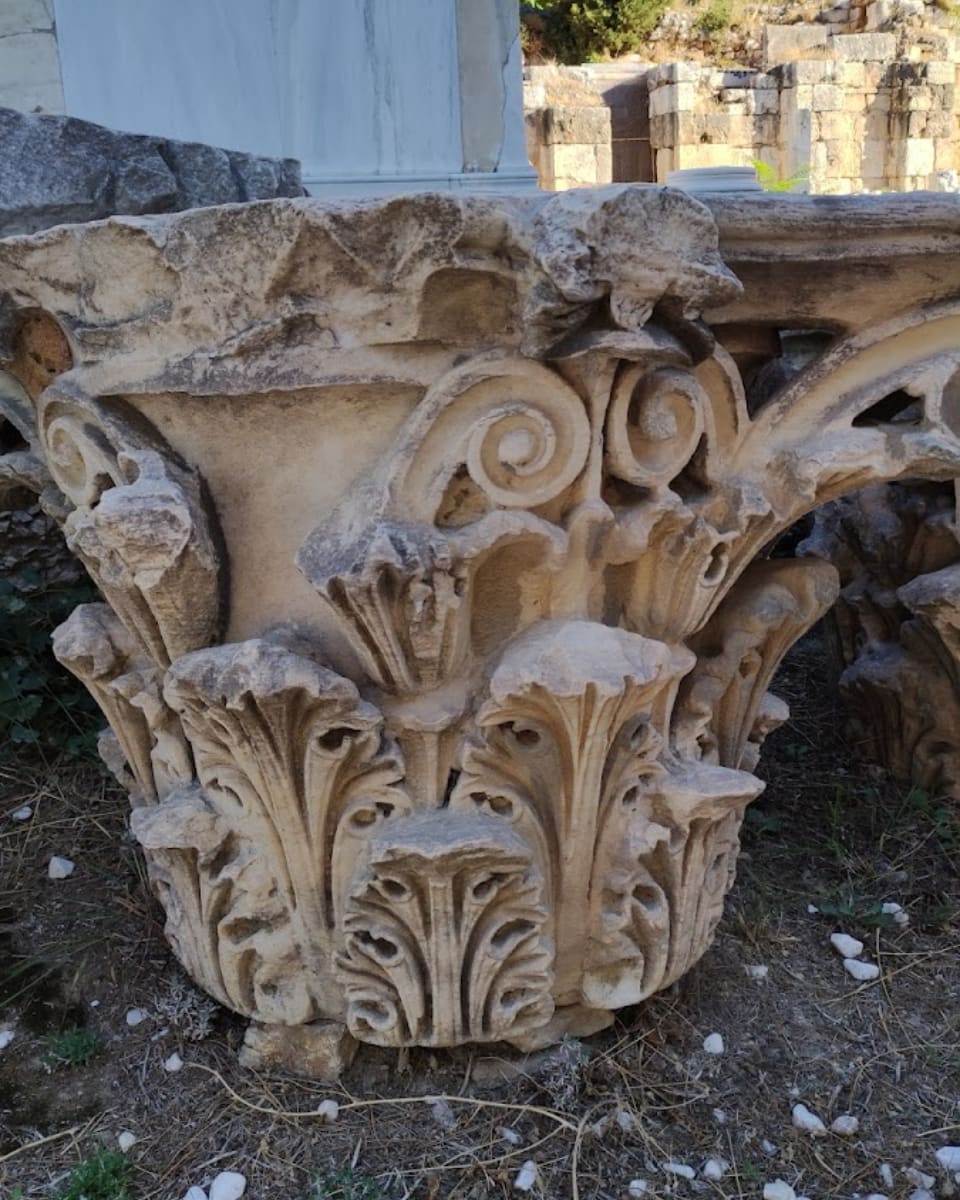Are you visiting Athens and only have one day to see the best? This article will give you a great idea of what to see in the city in 1 day.
The article is full of useful tips that will help you save time and money, avoid tourist traps, choose the right neighborhood and enjoy the national cuisine in places recommended by locals.
Read this article to the end to learn how to avoid queues and not to miss the most important places in Athens!
What to see in one day in Athens, Greece
Before I get to the detailed itinerary, here’s a quick overview of what you’ll find below and a list of the best sights in Athens if you only have one day.
- Ancient Agora of Athens
- Adrianu Souvenir Street
- Stoa of Attalus
- Hadrian’s Library
- Roman Agora
- Areopagus
- Odeon of Herodotus Atticus
- Temple of Athena Nike
- Acropolis
- Parthenon
- Erechtheion
- Portico of the Caryatids
- Stoa of Eumenes
- Temple of Asclepius
- Theater of Dionysus
- Plaka
Read on for why I recommend these places if you only have 24 hours to spend in Athens.
⛳ Perfect “1 day in Athens” itinerary
It is easy to walk it in a day, even at a leisurely pace. It is enough to see the main places of the city and feel its atmosphere.
Insert the map here
How to use this map. Use your fingers (or computer mouse) to zoom in and out. Click or tap the icons to get more information about a place. Then click the arrow icon in the upper left corner to open the list. To open the entire map, tap the icon in the upper right corner.
1. Ancient Agora of Athens
- Visiting time: 45 – 60 minutes
- Recommended start time: 9 a.m.
The Ancient Agora was the center of ancient Athenian public life, so there is much to see for history lovers. The old marketplace and civic buildings provide a fascinating look at daily activities thousands of years ago.
For example, you can still see the foundations of structures like the public mint and government buildings. Piecing together how the space was used gives you insight into ancient Greek society.
In addition, the Agora houses the well-preserved Temple of Hephaestus, an iconic stone temple surrounded by columns.
- ⏰ Opening hours: daily from 8:00 to 20:00
- 🎫 Admission fee: 10€ for standard ticket
2. Adrianu Souvenir Street
- Visiting time: 25 – 35 minutes
- 5 minutes walk from Ancient Agora
Adrianou Street is lined with small shops, restaurants, and cafes housed in charming neoclassical buildings. As you walk down the stone-paved street, you’ll find vendors selling souvenirs, artwork, jewelry, and traditional Greek foods.
Stop for a Greek coffee or fresh juice while people watching from a cafe terrace. The street comes alive at night, with musicians busking and tables spilling out from lively tavernas.
Wander into the small boutiques to browse handicrafts, ceramics, olive oil products, and other mementos of your time in Greece.
3. Stoa of Attalus
- Visiting time: 20 – 30 minutes
- 2 minutes walk from Adrianu Street
Built in 150 BC, the Stoa of Attalus was once the ancient Agora’s most elaborate building. Strolling through its colonnade, you’ll be transported back in time. You can vividly imagine Socrates and Plato debating philosophy under its roof.
Inside, you’ll view fascinating archaeological remains. The Stoa houses the Museum of the Ancient Agora. It displays a wealth of artifacts unearthed in the area, including statues, vases, tools, and jewelry. Stand before monuments dedicated to ancient heroes.
Beyond the artifacts, the architecture of the Stoa itself is captivating. Its 46 Doric columns soar 20 feet high, supporting a roof with red-tile shingles.
- ⏰ Opening hours: daily from 8:00 to 17:00, Tue from 10:00
- 🎫 Admission fee: 5€ for standard ticket
4. Hadrian’s Library
- Visiting time: 45 – 60 minutes
- 2 minutes walk from Adrianu Street
Built around 132 AD, Hadrian’s Library was once part of Roman Emperor Hadrian’s grand cultural center in Athens. Though just a skeleton remains today, it’s still an impressive sight with towering Corinthian columns and dramatic arched gateways.
Beyond the historical insights, the ruins are incredibly photogenic. The towering columns make for dramatic photos, especially with the Acropolis looming in the background. The elevated site also provides excellent views out over the Plaka district. It’s a place where the ancient world meets the vibrant modern city.
- ⏰ Opening hours: daily from 8:00 to 20:00
- 🎫 Admission fee: 3€ for standard ticket
5. Roman Agora
- Visiting time: 45 – 60 minutes
- 3 minutes walk from Hadrian’s Library
The Roman Agora was built in the 1st century BC and was the commercial and administrative center of ancient Athens. The well-preserved ruins include colonnaded porticos, administrative buildings, and shops that once bustled with merchants and traders. The well-preserved ruins provide a fascinating glimpse into daily life thousands of years ago.
The square would have been surrounded by workshops and merchant stalls selling all kinds of goods. There are ruins of a library, a public latrine, fountains, colonnades, and other buildings that give insight into Roman engineering and architecture.
- ⏰ Opening hours: daily from 8:00 to 18:30
- 🎫 Admission fee: 4€ for standard ticket
6. Areopagus
- Visiting time: 20 – 30 minutes
- 12 minutes walk from Roman Agora
The Areopagus is an ancient rock outcropping located near the Acropolis. When visiting the Areopagus, you’ll immediately understand why the ancient Athenians chose this lofty spot for their high court. Perched atop a stone cliff, the wide-open space allows for fantastic panoramic views of the modern city.
Beyond its historical significance as an ancient court, the Areopagus also played a role in myth. According to legend, the goddess Athena battled the god Ares, in whose honor the Areopagus was named.
Despite its barren appearance now, archeological findings revealed temples and sanctuaries once dotted the landscape. Use your imagination to picture how it must have looked in Ancient Greece as a place of worship and judgment.
7. Odeon of Herodotus Atticus
- Visiting time: 1 – 1,5 hours
- 4 minutes walk from Areopagus
The Odeon of Herod Atticus is an ancient Greek theater located on the south slope of the Acropolis in Athens that dates back to around 161 AD. Constructed of marble, this impressively large theater was commissioned by the wealthy Roman Herodes Atticus in memory of his wife. Even after almost 2,000 years, the semicircular structure remains largely intact and offers a glimpse into the engineering feats of ancient Greek architects.
As a tourist, you’ll be amazed at the sheer size of the theater, which had seating for over 5,000 spectators in its prime. By walking around the arched entrance ways and climbing up the original stone-carved seats, you can imagine what it would have been like attending a theatrical performance here centuries ago.
- ⏰ Opening hours: daily from 8:00 to 20:00
- 🎫 Admission fee: 10€ for standard ticket
8. Temple of Athena Nike
- Visiting time: 45 – 60 minutes
- 5 minutes walk from Odeon of Herodotus Atticus
Built to honor Athena, the goddess of wisdom and war, the temple has graced the Acropolis since around 420 BC. While small, it is a classic example of elegant Ionic architecture. The temple’s friezes depicting scenes from Greek mythology are considered some of the finest of the classical era.
Inside, marvel at the temple’s prominent porch and small inner chamber that housed an immense statue of Athena in ancient times. Try picturing the colossal effigy of the goddess, robed in gold and ivory. Though that statue is long gone, much of the temple remains remarkably intact.
- ⏰ Opening hours: daily from 8:00 to 18:15
- 🎫 Admission fee: 10€ for standard ticket
9. Acropolis
- Visiting time: 1 – 1,5 hours
- 1 minute walk from Temple of Athena Nike
Rising nearly 500 feet above sea level, the Acropolis is an imposing sight to behold. This flat-topped rock overlooks the sprawling city of Athens. When you step onto the Acropolis grounds, you’ll understand why it was chosen as the fortified site for ancient Athens.
However, the real stars of the Acropolis are its ancient temples and buildings. The world-renowned Parthenon is instantly recognizable with its towering Doric columns. This temple to the goddess Athena is considered an architectural masterpiece still standing after nearly 2,500 years.
Beyond just being architecturally and historically significant, the Acropolis gives you insight into ancient Greek society. This citadel was the center of civic and religious life. For many tourists, a chance to walk among the ruins of ancient Greek civilization is a once-in-a-lifetime experience. It’s a powerful feeling being in a place with so much history.
- ⏰ Opening hours: daily from 8:00 to 20:00
- 🎫 Admission fee: 10€ for standard ticket
10. Parthenon
- Visiting time: 30 – 45 minutes
- 1 minute walk from Acropolis
Built in the 5th century BCE, the Parthenon is dedicated to Athena, goddess of wisdom and patron of the city. Even after 2500 years, it remains remarkably intact.
The level of detail in the Parthenon is stunning. The Doric columns are fluted with intricate patterns and taper elegantly. Meticulous carvings adorn the pediments, depicting legendary battles and Olympian gods. You can even see the holes where bronze fittings were once attached. It is a testament to the great skill and artistry of its creators.
It was converted into a Christian church in the 6th century and then became a mosque when Greece was under Ottoman rule.
- ⏰ Opening hours: 24/7
- 🎫 Admission fee: 10€ for standard ticket
11. Erechtheion
- Visiting time: 20 – 35 minutes
- 1 minute walk from Parthenon
The most striking feature of the Erechtheion is its Porch of the Maidens – six carved female figures that elegantly support the temple’s roof. These graceful caryatids are one of the most iconic and photographed parts of the Acropolis.
It was built on the site of the ancient palace of King Erechtheus, who was an early legendary ruler of Athens. According to myth, the temple was erected over the tomb of Cecrops, another mythical early king. This connection to Athens’ mythic past adds to the temple’s mystique. After admiring the Porch of the Maidens and taking in the Erechtheion’s grand exterior, head inside this temple to imagine the rituals and offerings made here thousands of years before our time.
- ⏰ Opening hours: daily from 8:00 to 19:00
- 🎫 Admission fee: 10€ for standard ticket
12. Portico of the Caryatids
- Visiting time: 25 – 40 minutes
- 1 minute walk from Parthenon
This iconic structure is a must-see attraction for any visitor to Athens interested in ancient Greek architecture and sculpture. The Portico, built in 421 BC, is part of the Erechtheion temple on the north side of the Acropolis. It contains six statues of draped female figures known as caryatids that elegantly support the porch roof on their heads.
Unlike other Acropolis structures that were damaged over centuries, the Portico of the Caryatids is remarkably well preserved. Five of the original six caryatids are still in place today in all their glory.
13. Stoa of Eumenes
- Visiting time: 35 – 45 minutes
- 3 minutes walk from Portico of the Caryatids
Built in the 2nd century BC, the Stoa of Eumenes was one of the architectural highlights of the old Agora marketplace. With its stately two-storied colonnade and iconic Corinthian columns, the stoa provided a shady promenade and gathering place for philosophers, politicians, and merchants.
As you stroll through its marble halls, immersive multimedia displays bring the stoa to life. 3D reconstructions show the stoa in its former glory. Touch screens let you explore the shops and statues that once filled its interior. The towering columns exemplify the Doric, Ionic, and Corinthian orders. Decorative touches like the acanthus scrolls on the capitals demonstrate the artistry of the period. Appreciating these architectural details will give you a deeper understanding of the sophistication of Ancient Greek culture.
14. Temple of Asclepius
- Visiting time: 40 – 50 minutes
- 1 minute walk from Stoa of Eumenes
The Temple of Asclepius dates back to the 5th century BC. It was built to honor Asclepius, the son of Apollo who was revered for his healing powers. Pilgrims would come from all over ancient Greece to be healed at his temple. Even today you can see the remains of elaborate baths, treatment rooms, and more where the sick sought Asclepius’s cures.
You can also see offerings left long ago to the god of healing. From coins to figurines, these artifacts provide a window into the beliefs and rituals around Asclepius.
Beyond the history, the temple grounds are simply beautiful to explore. Towering columns overlook lush gardens dotted with crumbling statues now overgrown with ivy.
- ⏰ Opening hours: daily from 8:00 to 18:30
- 🎫 Admission fee: free
15. Theater of Dionysus
- Visiting time: 45 – 60 minutes
- 1 minute walk from Temple of Asclepius
Constructed in the 6th century BC, it is one of the oldest theater ruins still standing today. Attending a play or festival here was an important part of ancient Greek civic life. The theater could once seat up to 17,000 people on its stone seats and hosted drama competitions, political meetings, and religious rituals.
Visiting the well-preserved ruins lets you imagine the theater in its heyday. You can still see the seating area, the orchestra where the chorus danced, and old marble thrones for important spectators. It’s amazing to think famous plays like Oedipus Rex and Lysistrata were first performed on this very stage over 2,500 years ago!
In addition to its historical significance, the ruins today also provide beautiful views overlooking the city. The tiered rows of seating face out towards the Acropolis, with greenery and the modern city in the distance.
- ⏰ Opening hours: daily from 8:00 to 17:00
- 🎫 Admission fee: 10-15€ depending on the season
16. Plaka
- Visiting time: 1,5 – 2 hours
- 5 minutes walk from Theater of Dionysus
You can easily spend half a day wandering around Plaka, the old historical neighborhood at the foot of the Acropolis in Athens. With its labyrinth of narrow pedestrian streets lined with small shops, restaurants, and cafes housed in 19th century neoclassical buildings, Plaka gives you a taste of old world Greece.
As you explore the cobblestone alleys, you’ll find stores selling everything from handmade leather sandals to olive oil soaps to Greek handicrafts. Stop at one of the outdoor cafes for a strong Greek coffee or a glass of ouzo and watch people strolling by.
Don’t miss the chance to visit the small yet interesting museums scattered through Plaka, like the Greek Folk Art Museum with its displays of regional costumes and handicrafts.
Answers to questions
What is the best time of year to visit Athens?
Late spring and early fall are ideal when the weather is mild and there are fewer tourists than summer. Avoid July and August when it’s hot and crowded.
What is the easiest way to get around Athens?
The metro is quick and efficient. Taxis are plentiful but traffic can be bad. For major sites, walking is often your best bet. Just wear comfy shoes!
What’s the food like in Athens?
Delicious! Try moussaka, souvlaki, Greek salad, and fresh seafood. Order some ouzo to drink or strong Greek coffee. For snacks, grab phyllo pastries or loukoumades doughnuts. You won’t go hungry here!
How much does a trip to Athens cost?
With budget lodging and affordable food, you can manage Athens on $60-100 a day per person without too much effort. Hotels in the Plaka or near the Acropolis run $100-200 per night. Admission to the major ancient sites is around $10-20 each. Overall, Athens offers great value compared to other European capitals!







